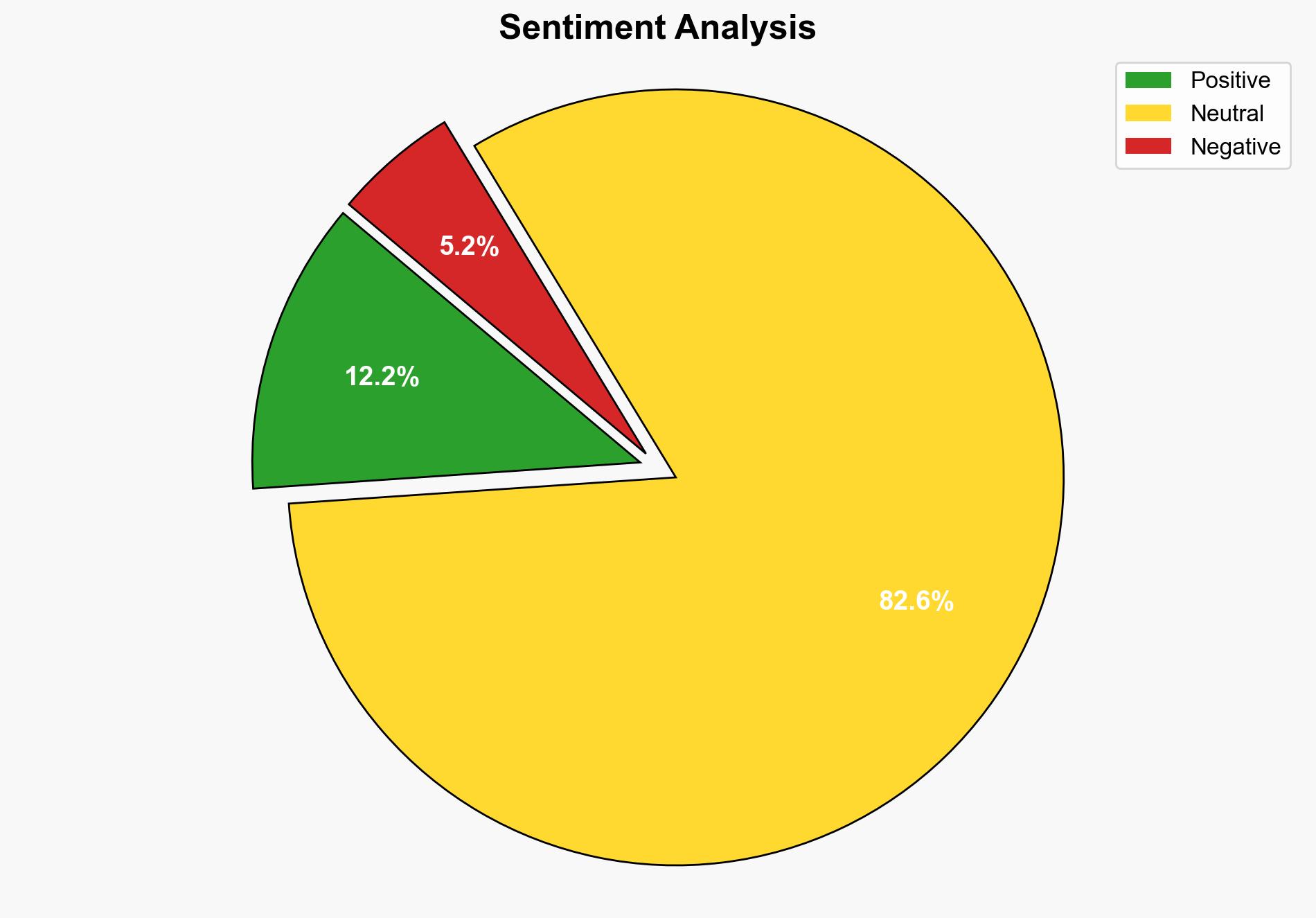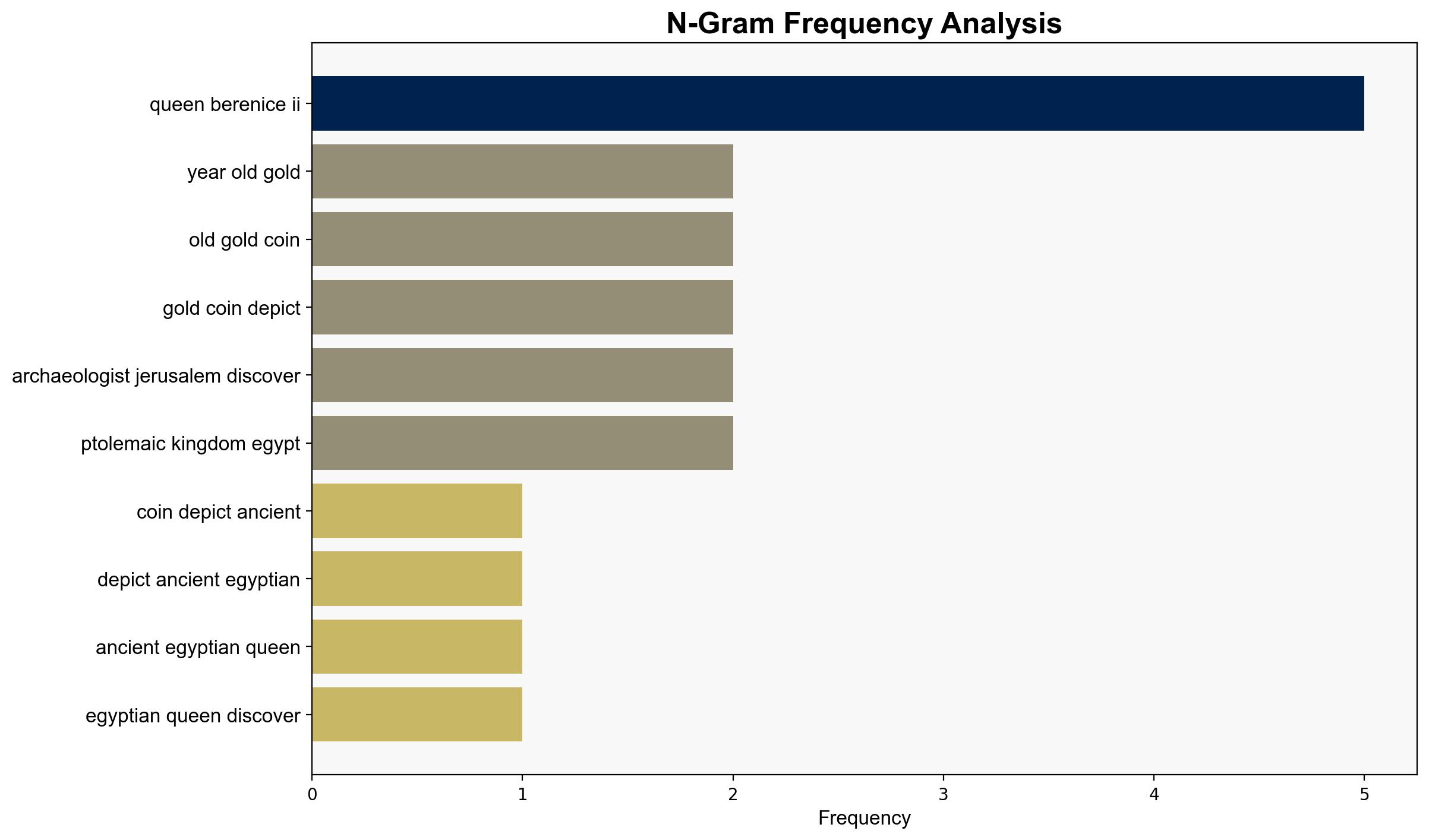2200-year-old gold coin depicting ancient Egyptian queen discovered in Jerusalem – Live Science
Published on: 2025-09-07
Intelligence Report: 2200-year-old gold coin depicting ancient Egyptian queen discovered in Jerusalem – Live Science
1. BLUF (Bottom Line Up Front)
The discovery of a 2200-year-old gold coin depicting Queen Berenice II in Jerusalem suggests significant historical ties between the Ptolemaic Kingdom of Egypt and ancient Jerusalem. The most supported hypothesis is that the coin was brought to Jerusalem by a soldier or trader during the Ptolemaic rule, reflecting the city’s strategic importance in regional trade and political alliances. Confidence level: Moderate. Recommended action: Further archaeological investigation to uncover more artifacts that could clarify the historical context and strengthen cultural heritage ties.
2. Competing Hypotheses
1. **Hypothesis A:** The coin was brought to Jerusalem by a soldier or trader during the Ptolemaic rule, indicating Jerusalem’s role as a significant trade and political hub.
2. **Hypothesis B:** The coin was a diplomatic gift or part of a tribute, reflecting a formal alliance or political relationship between the Ptolemaic Kingdom and Jerusalem’s ruling elite.
Using ACH 2.0, Hypothesis A is better supported due to the historical context of trade and military movements in the region, as well as the presence of other similar artifacts. Hypothesis B lacks direct evidence of formal alliances or diplomatic exchanges during this period.
3. Key Assumptions and Red Flags
– **Assumptions:**
– The coin’s presence in Jerusalem is directly linked to historical interactions between the Ptolemaic Kingdom and Jerusalem.
– The coin’s discovery site accurately reflects its historical context.
– **Red Flags:**
– Lack of direct evidence linking the coin to specific historical events or figures.
– Potential bias in interpreting the coin’s significance based on limited archaeological data.
4. Implications and Strategic Risks
The discovery highlights Jerusalem’s historical significance as a cultural and economic center, which may influence modern geopolitical narratives. There is a risk of politicization of archaeological findings, potentially affecting regional relations. Additionally, the find could spur increased interest in the region’s archaeological sites, impacting tourism and cultural heritage preservation efforts.
5. Recommendations and Outlook
- Conduct comprehensive archaeological surveys in the area to uncover additional artifacts that could provide more context.
- Engage with regional historians and archaeologists to interpret findings collaboratively, minimizing bias.
- Scenario-based projections:
- Best: Discovery leads to increased cultural tourism and strengthened regional cooperation in heritage preservation.
- Worst: Findings are politicized, leading to regional tensions and disputes over cultural heritage.
- Most Likely: Continued archaeological interest and research, with moderate impact on regional narratives.
6. Key Individuals and Entities
– Queen Berenice II
– Ptolemy III
– Robert Kool
– Rivka Langler
– Yiftah Shalev
– Yuval Gadot
7. Thematic Tags
cultural heritage, archaeology, regional history, Ptolemaic Kingdom, Jerusalem





